Blue Helix |
|||||||||||||||||||||||||||||||||||||
 |
 |
||||||||||||||||||||||||||||||||||||
Circle crocheted jacket in 1 strand DROPS Nord + 1 strand DROPS Kid-Silk. Piece is worked with lace pattern. Size: S - XXXL
DROPS 194-36 |
|||||||||||||||||||||||||||||||||||||
|
EXPLANATION FOR THE PATTERN: ---------------------------------------------------------- PATTERN: See diagrams A.1 to A.3. CROCHET INFO-1: Replace first double crochet at beginning of round with 1 chain stitch, finish round with 1 slip stitch in 1st chain stitch at beginning of round. Replace first treble crochet at beginning of round with 3 chain stitches, finish round with 1 slip stitch in 3rd chain stitch at beginning of round. Replace first double treble crochet at beginning of round with 4 chain stitches, finish round with 1 slip stitch in 4th chain stitch at beginning of round. CROCHET INFO-2 (transition to next round): Work slip stitches to first stitch on next round. If there is a chain space on last round work chain stitches until middle of first chain space on round. NOTE: Applies from the end of 3rd round in A.1 and until finished measurements. INCREASE TIP: Increase 1 chain space as follows: Work * 1 double crochet + 1 chain space *, work from *-* 2 times in total around same chain space. DECREASE TIP (applies to sleeves): NOTE: Pattern displaces the beginning of round, therefore adjust so that the 2 decreases are done mid under sleeve. Decrease 1 chain space as follows: Work 1 double crochet around chain space, 1 double crochet around next chain space, 6 chain stitches. ---------------------------------------------------------- START THE PIECE HERE: ---------------------------------------------------------- JACKET - SHORT OVERVIEW OF THE PIECE: Work piece in the round in a circle from mid back of back and outwards. Work armholes on the circle. Work front pieces back and forth and then work a finishing edge around the entire circle. Work sleeves in the round, top down. CIRCLE: Work 4 chain stitches on hook size 5 mm with 1 strand Nord + 1 strand Kid-Silk (= 2 strands) and form a ring with 1 slip stitch in first chain stitch made. Then work pattern in the round according to diagram A.1 7 times in total on round - read CROCHET INFO-1 and CROCHET INFO-2. REMEMBER THE CROCHET TENSION! When A.1 has been worked vertically, there are 49 chain spaces on last round. The circle measures approx. 34 cm in diameter. Cut the yarn, and begin next round in 4th chain space = mid back/neck. Now continue in the different sizes as follows: SIZE S-M: = 49 chain spaces. Work first round in A.2 - AT THE SAME TIME work armholes as follows: Work around each of the first 7 chain spaces, work 35 loose chain stitches (= armhole), skip 8 chain spaces, work around each of the next 19 chain spaces, work 35 loose chain stitches (= armhole), skip 8 chain spaces, work around each of the last 7 chain spaces. Repeat 2nd round in A.2 - AT THE SAME TIME increase - read INCREASE TIP, as follows: Work around each of the first 7 chain spaces - increase 2 chain spaces over these chain spaces, work 10 chain spaces/double crochets around armhole (= 2 increases), work around each of the next 19 chain spaces - increase 7 chain spaces over these chain spaces, work 10 chain spaces/double crochets around armhole (= 2 increases), work around each of the last 7 chain spaces - increase 2 chain spaces over these chain spaces (= 15 increases in total on round) = 64 chain spaces. Then work 3rd round in A.2 without increasing. The circle measures approx. 45 cm in diameter. SIZE L/XL - XXL/XXXL: = 49 chain spaces. Work first round in A.2 - AT THE SAME TIME increase 15 chain spaces evenly (i.e. increase 1 chain space over approx. every 3rd chain space) - read INCREASE TIP = 64 chain spaces. Work second round in A.2 - AT THE SAME TIME work armholes as follows: Work around each of the first 8 chain spaces, work 38-41 loose chain stitches (= armhole), skip 9 chain spaces, work around each of the next 30 chain spaces, work 38-41 loose chain stitches (= armhole), skip 9 chain spaces, work around each of the last 8 chain spaces. Then work 3rd round in A.2 without increasing. The circle measures approx. 45 cm in diameter. ALL SIZES: = 64 chain spaces for all sizes Then work diagram A.3 in the round, work A.3 5-6-7 times in total vertically - AT THE SAME TIME increase on round marked with arrow in diagram - remember INCREASE TIP, as follows: Increase 16 chain spaces on every round with increase, i.e. 1ST TIME: Increase 1 chain space around every 4th chain space = 80 chain spaces. 2ND TIME: Increase 1 chain space around every 5th chain space = 96 chain spaces. 3RD TIME: Increase 1 chain space around every 6th chain space = 112 chain spaces. 4TH TIME: Increase 1 chain space around every 7th chain space = 128 chain spaces. 5TH TIME: Increase 1 chain space around every 8th chain space = 144 chain spaces. Now continue in the different sizes as follows: SIZE S-M: Fasten off. The circle measures approx. 100 cm in diameter. SIZE L/XL: 6TH TIME: Increase 1 chain space around every 9th chain space = 160 chain spaces. Fasten off. The circle measures approx. 111 cm in diameter. SIZE XXL/XXXL 6TH TIME: Increase 1 chain space around every 9th chain space = 160 chain spaces. 7TH TIME: Increase 1 chain space around every 10th chain space = 176 chain spaces. Fasten off. The circle measures approx. 122 cm in diameter. ALL SIZES: = 144-160-176 chain spaces. Continue working only over 40-44-47 chain spaces in each side – i.e. do not work over 32-36-40 chain spaces at the top by neck and 32-36-42 chain spaces at bottom of back. Continue with explanation under left front piece. LEFT FRONT PIECE: = 40-44-47 chain spaces. Continue back and forth as follows: ROW 1: Work slip stitches until middle of the first chain space, 1 double crochet, * work 6 chain stitches, 1 double crochet around next chain space *, repeat from *-* and finish with 1 double crochet around last chain space = 39-43-46 chain spaces. Repeat 1st row 3-3-7 more times. There are 36-40-39 chain spaces at the edge of front piece. Cut the yarn. RIGHT FRONT PIECE: Work same way as on left front piece over 40-44-47 chain spaces in the right side. Fasten off. FINISHING EDGE: Work an edge around the entire circle as follows: Work last round in A.3, i.e. over every chain space work 1 double crochet and 3 chain stitches. Then work 1st round in A.3, i.e. work 3 double treble crochet around every chain space. Fasten off. Piece measures approx. 104-115-126 cm in diameter vertically and approx. 114-126-146 cm in diameter in width. SLEEVE: Work sleeve in the round from armhole. Begin mid under sleeve and work 57-63-66 double treble crochets evenly around armhole (= approx. 3 double treble crochets around every chain space) = 1st round in A.3. Continue in the round on A.3 to and with last round. Then repeat A.3 vertically - AT THE SAME TIME decrease 2 chain spaces mid under sleeve, decrease on round marked with arrow in diagram - read DECREASE TIP. Decrease like this on every round marked with arrow 4-5-5 times in total = 11-11-12 chain spaces. Continue without decrease until sleeve measures approx. 42-44-46 cm - adjust to finish after a round with double treble crochets. Fasten off. Work the other sleeve the same way. |
|||||||||||||||||||||||||||||||||||||
Diagram explanations |
|||||||||||||||||||||||||||||||||||||
|
|||||||||||||||||||||||||||||||||||||
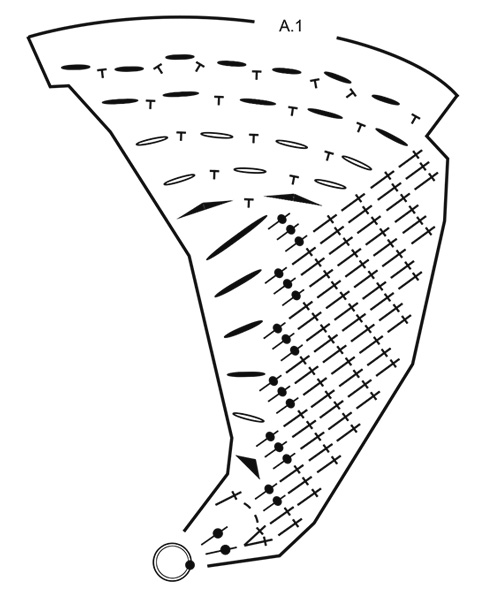
|
|||||||||||||||||||||||||||||||||||||
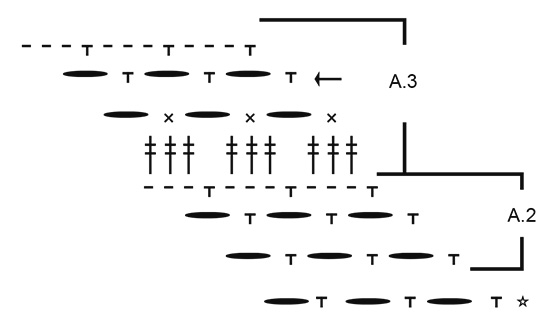
|
|||||||||||||||||||||||||||||||||||||
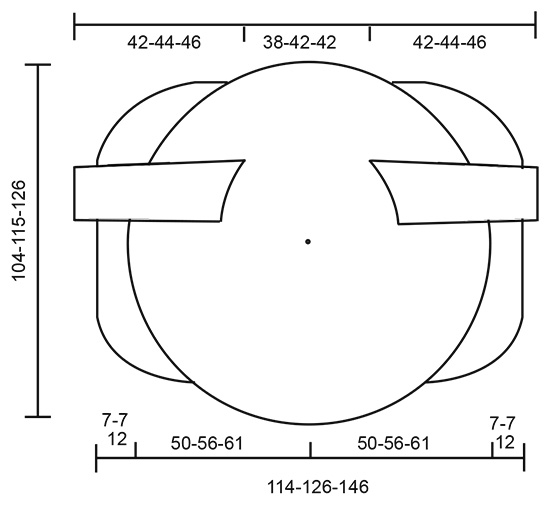
|
|||||||||||||||||||||||||||||||||||||
|
Have you made this or any other of our designs? Tag your pictures in social media with #dropsdesign so we can see them! Do you need help with this pattern?You'll find tutorial videos, a Comments/Questions area and more by visiting the pattern on garnstudio.com. © 1982-2024 DROPS Design A/S. We reserve all rights. This document, including all its sub-sections, has copyrights. Read more about what you can do with our patterns at the bottom of each pattern on our site. |
|||||||||||||||||||||||||||||||||||||











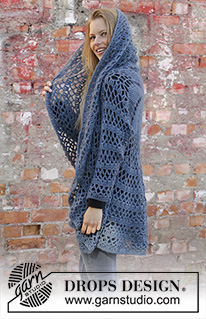
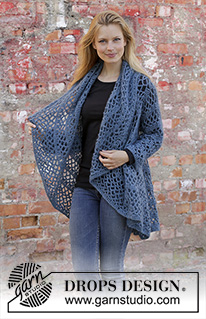

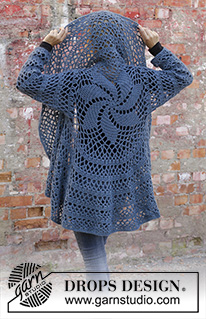


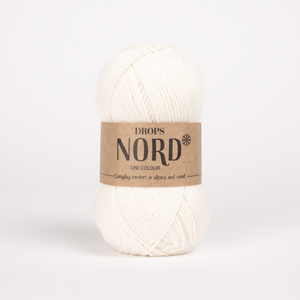
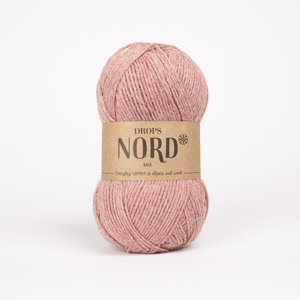








































Comments / Questions (79)
Hej! Jag har virkat många drops mönster men har aldrig haft så svårt att förstå. Jag bhar oxå läst alla frågor och kommentarer,men...... När jag virkar a2; varv3, alltså 1a varvet där maskorna för ärmhålet finns, ska jag virka om den stora luftmaskbågen, eller?
06.07.2021 - 15:56Hej, Jag har kommit till raden med ärmhål och kan inte förstå vad som menas med "virka om var och en av de första 8 luftmaskbågarna". Virka om, vad gör jag då? Virka dubbelt i samma maskor?
06.07.2021 - 15:30DROPS Design answered:
Hej Solei. Vi menar att du ska virka om ( inte i ) luftmaskbågen, se denna video. Mvh DROPS Design
08.07.2021 - 08:28Bonjour, J'aimerai faire ce modèle, mais avec la laine DROPS Belle, pour avoir un effet relief Je fais une taille 42, combien de pelotes dois prévoir svp ? merci d'avance pour votre réponse cordialemnet
27.03.2021 - 11:16DROPS Design answered:
Bonjour Katy, DROPS Belle est du groupe de fils B, il vaudrait mieux prendre la laine du groupe C. Essayez notre convertisseur qui se trouve devant les explications. Comment choisir une taille appropriee vous trouverez ICI. Bon crochet!
30.03.2021 - 13:18Have completed the round and am beginning the left front piece. On the instructions it states slip stitch to middle of first chain stitch. Where do you begin the slip stitch? At the middle of neck/back or?
13.03.2021 - 06:42DROPS Design answered:
Dear Karen, fold your circle double to have armholes matching together, then count the chain spaces you will have to leave unworked (for neck/bottom) and the one you will have to work over for each front piece. Join the the yarn in the middle of the first chain space or in the sc before that chain-space and crochet 1 sl st in each of the chains to reach the middle of this first ch-space. Happy crocheting!
15.03.2021 - 08:22Bonjour Je coince au niveau des manches mes emmanchures sont à l'envers du travail. Je ne sais pas commencer les manches pourriez vous m'aider ?
02.03.2021 - 14:54DROPS Design answered:
Bonjour Mme Fourdrinier, les manches vont se crocheter en commençant sur l'endroit du gilet, en bas de l'emmanchure, autrement dit, pour la manche gauche, crochetez d'abord dans les mailles en l'air crochetées (devant) puis dans les mailles sautées (côté dos du cercle), et pour la manche droite, commencez par crocheter les mailles sautées pour l'emmanchure (côté dos) puis terminez par crocheter dans les mailles en l'air (côté devant). Bonne continuation!
02.03.2021 - 16:06. Wondering how to proceed from the first round of A3, then repeat 5 times, and how to do a repeat.to make it long. Iove this pattern and have finally gotten to the final section, the sleeves. I dont.want to loose it.now. hope this.makes.more.sense.
15.02.2021 - 15:21DROPS Design answered:
Dear Mrs Jones, the first round of A.3 is worked around armhole, ie crochet 3 treble crochets (US-terms) around each ch-space of the armhole (= 1st row in A.3), work one time the diagram in height and then from next repeat in height decrease on the row with an arrow as explained under DECREASE TIP (applies to sleeve). After 11-12 ch-spaces in A.3 remain in the round, continue with A.3 without decreasing anymore to finished measurements - you can try on the jacket to adjust length. Happy crocheting!
16.02.2021 - 08:43I am starting the second attempt on the sleeves with the L/XL pattern. Repeating as I'm reading leaves the sleeves at mid arm. A little help please?
15.02.2021 - 06:22DROPS Design answered:
Dear Mrs Jones, I'm sorry I don't understand what you mean there, could you please give us more details? Until where exactly have you now worked on the pattern (armholes or sleeve, which height/row, ..) thank you!
15.02.2021 - 09:27Het lukt mij niet na de cirkel, om de aantal hoeveelheid kloppende meerderingen te maken ?
11.01.2021 - 16:04Hi, with reference to pattern z833 Blue Helix, can you tell me if the pattern has been translated at all into a normal text written type of pattern? Following diagram of jacket on page 7 (I cannot see that this diagram forms a circle) does this diagram indicate that jacket is made up in several pieces and then comes together to make the circle? I have spent nearly £100 on yarn & still deciphering pattern before comencing. It is almost impossible to unpick mohair without waste
30.10.2020 - 14:48DROPS Design answered:
Dear Lyndy, this pattern has only diagrams - you will find how to read crochet diagrams here and especially here how to read a fraction of circle here as A.1 shows - A.1 will be worked a total of 7 rounds in the round, ie on round 1 you work 2 treble crochets x 7 repeats = 14 trebles etc.. Hope this will help. Happy crocheting!
30.10.2020 - 15:25Hallo,kan de bleu helix ook gehaakt worden met acryl wol ?Groetjes
24.09.2020 - 17:55DROPS Design answered:
Dag Conny,
Ja, je kunt dit patroon natuurlijk met ander garen maken. Het gaat erom dat je eenzelfde stekenverhouding hebt, zodat je uitkomt met de maten.
18.11.2020 - 13:40